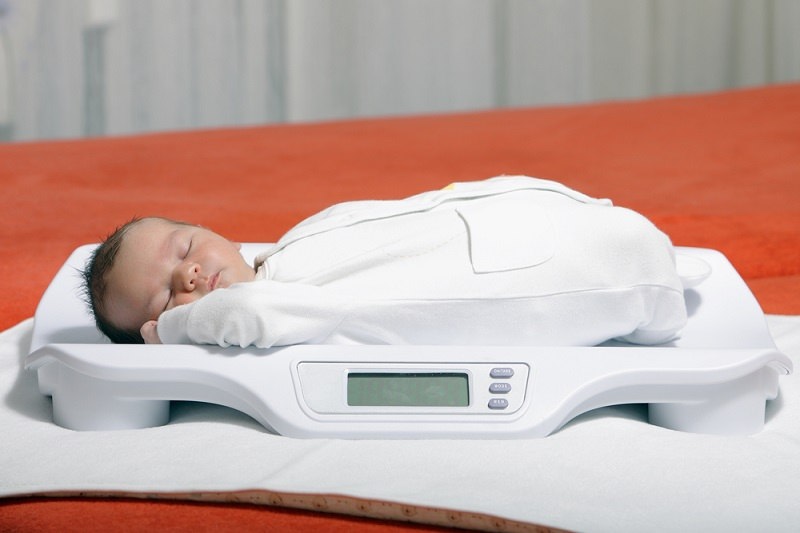Endocarditis is an infection of the endocardium, which is the inner lining of the heart. This condition is generally caused by the entry of bacteria into the bloodstream, which then infects the damaged part of the heart. If this condition is not treated immediately, endocarditis can damage the heart valves, and lead to dangerous complications.
In general, endocarditis is rare, and does not affect a person with a healthy heart. However, this disease is prone to occur in individuals with certain conditions. For example, in certain types of heart disease, such as people with congenital heart disease, people with cardiomyopathy, and people with prosthetic heart valves.

Endocarditis Symptoms
Symptoms of endocarditis may develop slowly over weeks or months (subacute endocarditis). It can also occur suddenly within a few days (acute endocarditis). This depends on the germ that causes the infection, and whether the patient has heart problems.
Symptoms and clinical signs of endocarditis can vary from patient to patient, including:
- Fever.
- Shivering.
- Weak.
- Muscle and joint pain.
- Headache.
- Sweating at night.
- Decreased appetite.
- Chest pain especially when breathing.
- Shortness of breath, especially when exercising.
- Cough.
- Heart noise.
- Swelling in the legs or abdomen.
- Pale skin.
In rare cases, other symptoms that may appear are:
- Weight loss for no reason.
- Hematuria (blood in urine).
- Red spots with pain on the palms of the hands and soles of the feet.
- Red bumps under the skin, on the fingers and toes.
- Purple or red spots on the skin, the whites of the eyes, or in the mouth.
- Splenomegaly or enlarged spleen.
- dazed (mental confusion).
Causes of Endocarditis
Endocarditis occurs when germs enter the bloodstream and then to the heart. The germs then attach to abnormal heart valves or damaged heart tissue, and multiply in the inner lining of the heart (endocardium). This condition triggers inflammation of the endocardium and damage to the heart valves.
In addition to bacterial causes, endocarditis can also be caused by fungi and other microorganisms. These germs enter the bloodstream in several ways, such as:
- Wound in mouth. There are sores in the oral cavity when brushing teeth too hard, dental procedures, or being bitten while chewing food, can cause bacteria to enter the bloodstream, especially if the teeth and gums are not kept clean.
- Oother organs infected. Bacteria can enter the bloodstream and heart, from infected body parts, for example from open wounds on the skin, sexually transmitted infections, or infections in the digestive tract.
- Urinary catheter. Bacteria can enter the bloodstream through catheters, especially those that have been in place for a long time.
- Syringe. Contaminated needles can be a medium for bacteria to enter the bloodstream, be it through tattoos, piercings, or injecting drug use.
Endocarditis Risk Factors
Endocarditis can be experienced by anyone. However, there are several factors that can increase a person's risk of suffering from this condition, including:
- Use of artificial heart valves.
- Injecting drug abuse.
- Suffering from congenital heart disease.
- Have had endocarditis.
- Damage to heart valves.
Endocarditis Diagnosis
To diagnose endocarditis, the doctor will first ask the patient's history and symptoms. Then, supporting examinations will be carried out to confirm the diagnosis, including:
- Electrocardiogram (ECG).An EKG is done to check for possible abnormalities in the patient's heart rate and rhythm, by measuring the electrical activity of the heart.
- Blood test.A blood sample will be examined to identify the type of bacteria in the bloodstream and to identify other medical conditions, such as anemia.
- Chest X-ray.Through a chest X-ray, doctors can tell if endocarditis causes the heart to enlarge, or causes the infection to spread to the lungs.
- Echocardiography.Echocardiography is an examination that uses sound waves to produce an image of the heart. To diagnose endocarditis, doctors can choose from 2 types of echocardiogram, namely:
- Echocardiography through the chest wall. This procedure is done by directing sound waves into the patient's chest, through an ultrasound device. This test helps doctors see the structure of the heart and look for signs of infection.
- Transesophageal echocardiogram. In this procedure, the doctor inserts an ultrasound device into the esophagus (esophagus) so that the resulting images are more detailed, especially on the heart valves.
- CT scan or MRI.This imaging test is done to check if the infection has spread to other organs, such as the brain or chest wall.
Endocarditis Treatment
In many cases, endocarditis patients are cured with antibiotics. While in some other cases, surgical procedures need to be done to repair the damaged heart valves and clear the rest of the infection.
Antibiotics
The type of antibiotic given to treat endocarditis depends on the type of germ causing the infection. Therefore, the patient's blood sample will be examined first to get the right combination of antibiotics.
Generally, patients will be given injectable antibiotics while in hospital. Treatment can last from 2 to 6 weeks, depending on the severity of the patient. When the condition improves, the patient can continue antibiotic therapy at home. However, patients are advised to have regular check-ups with the doctor to make sure the treatment is going well.
Even if you are on medication, some symptoms may appear as a sign of a worsening infection, or as a result of a reaction to the antibiotics used. Immediately see a doctor if symptoms of shortness of breath and swelling in the legs appear, which are getting worse. These symptoms can be a sign of heart failure.
Surgery
Surgery is performed on long-standing infectious endocarditis, or in endocarditis caused by a fungal infection. A surgical procedure is performed to remove dead tissue, fluid buildup, and scar tissue from the infected area.
Doctors will also perform surgery, if the condition of the patient's heart valve is damaged. Depending on the patient's condition, the doctor can repair the heart valve or replace it. Valve replacement can be with biological valves made from animal heart tissue, or synthetic mechanical valves.
Surgery is performed in 15-25% of patients with endocarditis. In addition to the above conditions, the doctor will also recommend surgery for the following conditions:
- The patient has a prosthetic heart valve.
- High fever persists despite antibiotic or antifungal therapy.
- Endocarditis is caused by an aggressive type of fungus or bacteria that are resistant to antibiotics.
- Blood clots develop, despite being on antifungal or antibiotic therapy.
- The formation of an abscess or fistula (abnormal channel) in the interior of the heart, which is known from the results of echocardiographic tests.
Endocarditis Complications
Endocarditis can trigger bacterial clumping and blood clots (vegetation) in the area of infection. The vegetation can detach and move to vital organs, such as the brain, lungs, kidneys, and spleen. If these conditions are not treated immediately, endocarditis sufferers can develop complications such as:
- Disorders of the heart, such as heart murmurs, heart valve damage, and heart failure.
- Formation of abscesses (collections of pus) in the heart, brain, and lungs.
- strokes.
- seizures.
- Pulmonary embolism.
- Kidney damage.
- Splenomegaly or enlarged spleen.
Endocarditis Prevention
Endocarditis can be prevented by maintaining good dental hygiene. Cleaning teeth with a toothbrush or dental floss, as well as regular dental check-ups can prevent germs from appearing in the mouth and into the bloodstream. If you are at risk for endocarditis, tell your dentist. Your doctor may give you antibiotics before undergoing the examination.
In patients with a history of endocarditis, heart surgery, or heart abnormalities, it is necessary to be aware of the symptoms of endocarditis, such as fever that lasts a long time, body weakness for no reason, and open wounds that do not heal.
Another preventive measure is to avoid behaviors that can trigger skin infections. For example, making tattoos, body piercing, or abusing injecting drugs.









